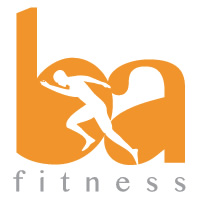Personal Trainer Bristol Principles of Training – Specificity
Welcome to the first of five blogs in this series. This series will delve deeper into the main points from my original blog; “Principles of Training” (July 30th), where the five main principles were outlined. Specificity, Progression, Overload, Recovery, Reversibility.
SPECIFICITY
So, what do you want to achieve from your training? This is the first question to consider before planning a training programme, as this will directly affect the type of training that you undertake.
To take a quote from The American College of Sports Medicine (ACSM); “The principle of specificity states that training effects derived from an exercise programme are specific to the exercise performed & the muscles involved.”
If you were to train your legs by distance running, in the hope of improving your leg muscular strength, then this wouldn’t provide the body with the appropriate stimulus or even be using the same energy pathways required, in order to elicit the required physiological adaptations.
So to train for muscular strength, you will be looking to incorporate weight training where you are getting to muscle failure between 5-12 repetitions, using leg exercises. Strength training enhances the quickly fatigable fast twitch fibres, as opposed to distance running at the opposite end of the spectrum, that recruits the far more sustainable slow twitch fibres – all pretty straight forward when you break it down.
On top of the physiological requirements mentioned above, you also need to consider the metabolic element of training. If you were wanting to improve your aerobic fitness for swimming, cycling or running for example, then the most effective way to do this is to exercise the specific muscles that are used for that sport and by doing that sport.
Avoid falling into the trap of thinking that (for example) because the leg movements of running and cycling are similar, there must therefore be that transition of leg muscular endurance between the two different sports.
The reality is very different, as there are a number of subtle differences in the leg muscles that are used. Eg, the sequence in which the quadriceps muscles are activated in the knee raise of the running stride Vs the ‘up’ phase of the pedal revolution. The knee extension used to extend the stride Vs the uniform position of the non-extended knee while pedalling etc
One final thing to remember is that we are all different. And, as such, we don’t all respond to the same training stimulus. For example, fitness levels at the start of a training programme, age – which affects training ability as well as recovery rates, injury potential etc.
There are many ways to achieve the desired results and a good coach or trainer will adjust the exercises given, based on how the athlete is responding to the exercises and stimulus given.
I will leave you with a final thought with which the SAID principle – Specific Adaptations to Imposed Demands – sums it up nicely, in that the specific adaptations are brought about by specific training undertaken.
So now you’re that step closer in making your training sessions that bit more effective, be sure to check back next week for part two, which discusses the importance of the PROGRESSION element of the training principles.
Until then, stay fit, stay healthy and enjoy your training!
Yours in good health,
Ben
